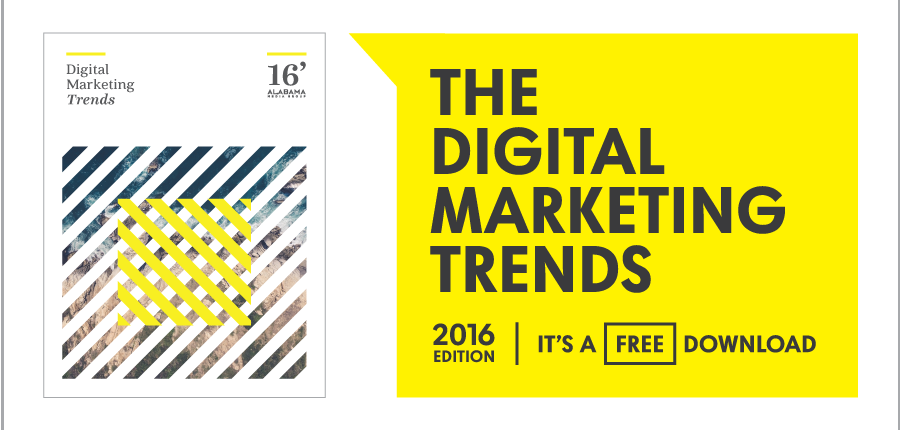Content Marketing in 2015 was about getting introduced to the concept, getting buy-in from the executives, marketers wrapping their head around what kind of content they should be producing, and figuring out how to measure ROI.
Now that the “shiny object” of the marketing world has had a year to settle in, it’s time to get smarter, more efficient and produce more results with content marketing in 2016.
Right now, 80% of B2B organizations and 76% of B2C organizations say they are implementing content marketing as part of their overall strategy.
That’s fantastic.
However, only 30% of those B2B’s and 38% of those B2C’s say that it’s been effective. Out of this group, only 44% of marketers say they understand what a successful content marketing program should look like.
That’s not so good.
Knowing this, what does effective content marketing look like in 2016? And how can we move the needle forward in terms of more marketers understanding what goes into a good content marketing program?
Here’s a quick guide to help businesses navigate content marketing in 2016.
1. Understand your audience. Let’s face it; too much content right now is created on a hunch. Businesses can’t afford to create things on a hunch. As marketers, we may have marvelous ideas for content that we think will meet the needs of customers, but ideas alone don’t mean that something will work. Backing up ideas with data is imperative. We need to show that our brilliant ideas align with the needs of our actual target audiences.
Who is researching or buying your product or service? What kind of content have consumers engaged with the most in the past? You should be looking at your social interactions, number of views, time spent on the content, downloads, form fills, and most importantly, your Google Analytics. What did people do after they read your content? That will tell you a lot about what your content efforts are doing for you and what kind of content you should be creating.
2. Look at your buyer’s journey and stick to that funnel. As your customers move from the awareness phase, to consideration, to conversion and then finally to advocacy, what information is important for them to read, see, or hear to keep them moving through that funnel? Know what those messages need to be and craft content that is addressing each step of that journey.
3. Document your plan and strategy. Statistics tells us that most marketers don’t typically have a documented strategy. In fact, only 32% of B2B marketers and 37% of B2C marketers have their content marketing strategy documented.
The rest are just winging it.
Those who have a documented content marketing strategy yield better results from their content marketing tactics, social media platforms and paid methods of distribution. Your plan doesn’t have to be fancy, but it has to be created and documented, even a few months at a time. As Ben Franklin famously said, “If you fail to plan, you’re planning to fail.” Wise words, Ben. Don’t be that marketer.
4. Meet regularly about your content marketing efforts. “But we have the plan documented and we know what we are going to do already, do we really need to meet more?”
Yes, yes you do.
Effectiveness of content marketing programs is greater among teams that meet more frequently. 61% of the most effective B2B marketers and 55% of the most effective B2C marketers meet daily or weekly. It can be just a quick touch point in person, a phone call or even a video conference. This will help keep everyone on the same page, figure out what is or isn’t working, and give the team opportunities to optimize current campaigns.
5. Re-evaluate, revamp and test your distribution tactics. So you’ve written some brilliant content pieces. Kudos…but that’s only half the battle. How are you actually planning to get people to the content? Are you utilizing social media platforms? Search engine marketing tactics? Native advertising? Your content distribution should include both organic and paid tactics.
To determine where and how you’re going to distribute your content, make sure you understand where your customers consume their content. Is it Instagram? Email? YouTube? One of the biggest issues content marketers run into is that they try be all things to all people in all places. Hone in on your sweet spot, do testing on different platforms, and understand where your customers like to engage with you.
Not sure where to start? See point number one.
6. Implement video. This isn’t simply a suggestion; it’s a demand from your consumers.
As it stands now, 78% of people watch videos online every week and 55% of people watch videos online every day.
What does this mean for businesses? People want to engage with video almost more than any other type of content. For example, using the word “video” in an email subject line boosts open rates by 19%. It increases click-thru rates by 65%. And perhaps the biggest one of all… sites that include video have on average an extra two-minute dwell time compared to sites that don’t.
Those aren’t stats that you can ignore.
No matter if the video is extremely high quality or a super low-res, real-time video, consumers’ appetite for watching something visual is undeniable.
7. Engage influencers to help with your content marketing efforts. Consumers today are overwhelmed with information from all different angles. Choices between services and products are endless; it can be hard for businesses to cut through all the noise and really speak to their desired consumer. When making buying decisions, consumers (either consciously or subconsciously) often look to people they recognize and trust to help guide them in the right direction.
Because of this, it’s so important for marketers to partner with influencers in their industry to help create credibility and brand stickiness with consumers. Influencers can help build relationships with a brand, create great content and increase the reach of a business’ content.
Not sure where to start? Ask an influencer to create a guest blog for your company, interview them on relevant topic in your industry, ask them for quotes, or partner with an influencer for a video series.
Use these guidelines to direct your content marketing efforts in 2016 and you’ll be on your way to creating successful content campaigns. As with anything in the marketing realm, the world of content marketing is dynamic and always changing…and it’s only going to keep moving faster.






